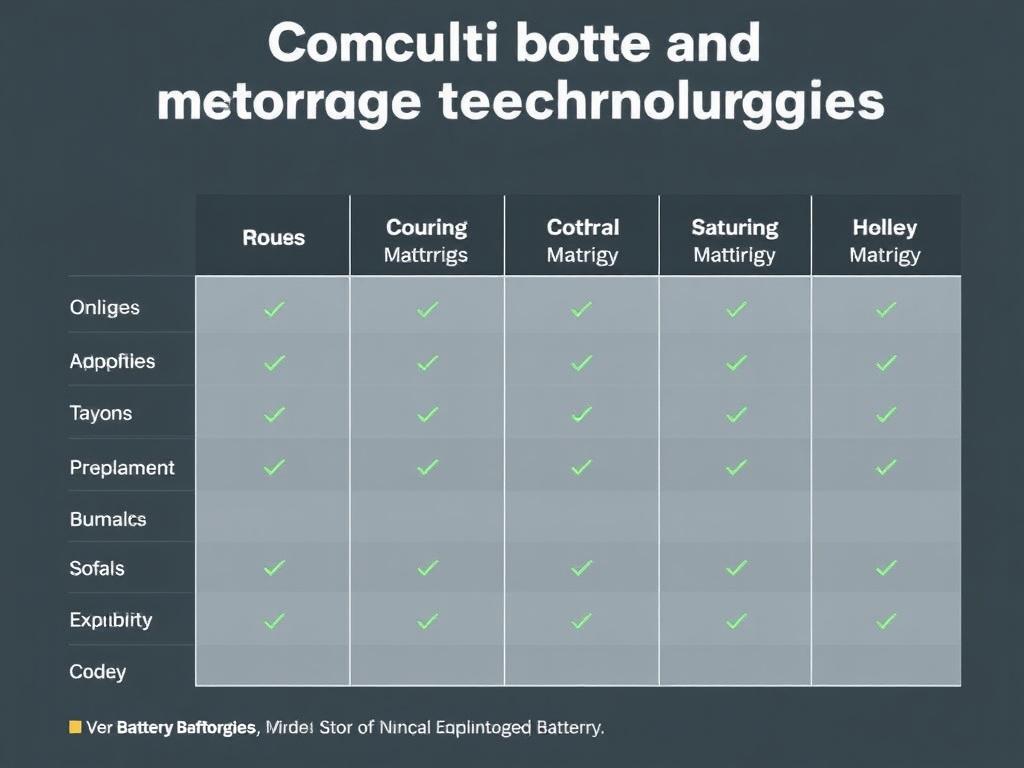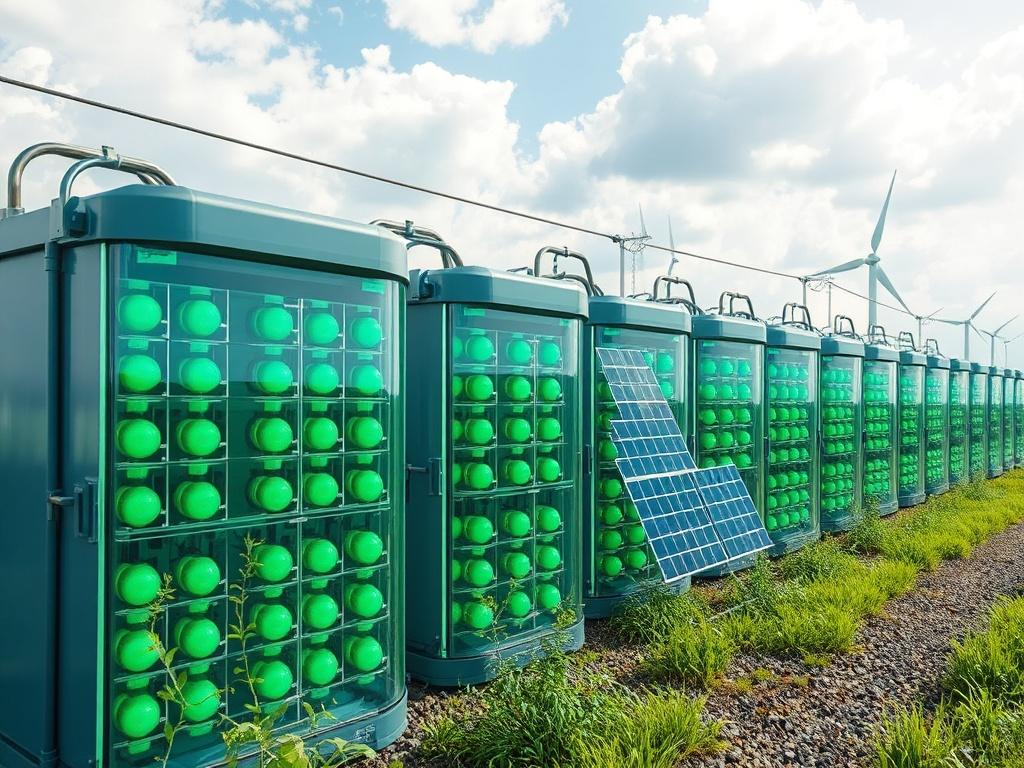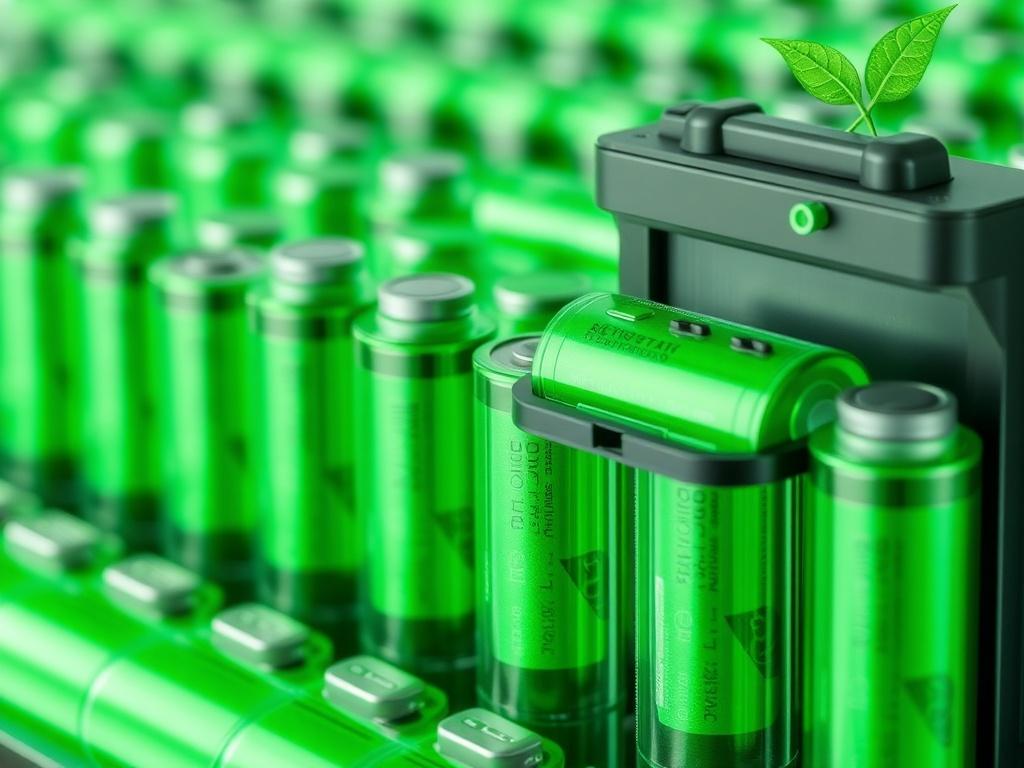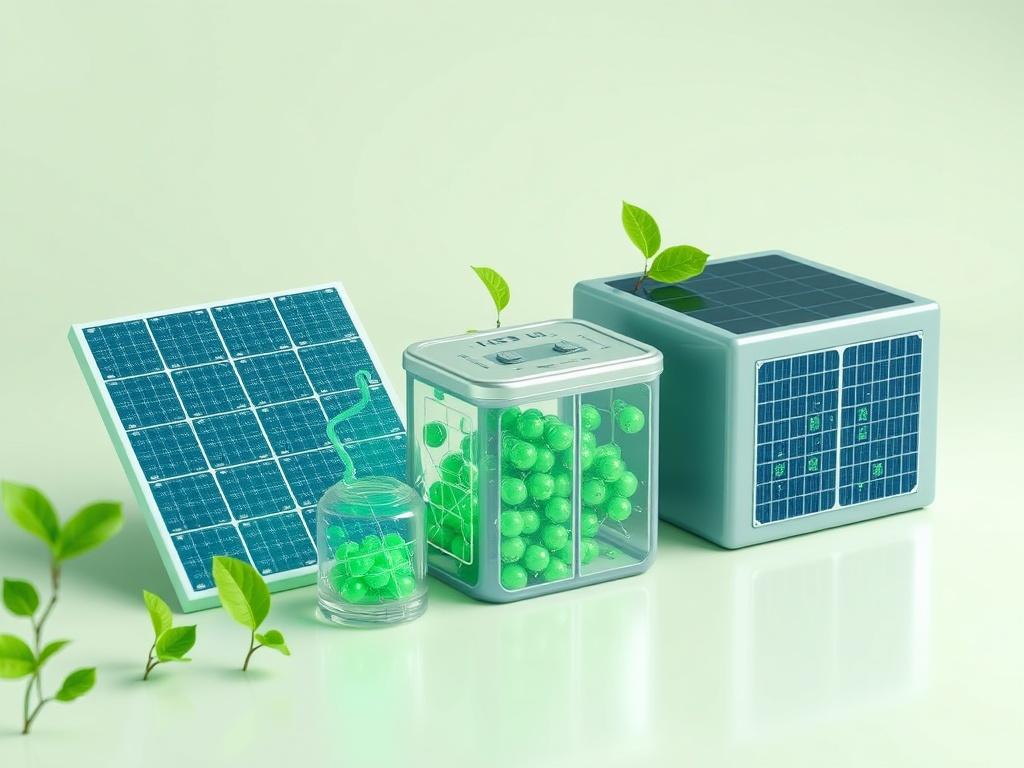- Why storage is essential for green energy
- Key services storage provides
- Battery technologies: the players and how they differ
- Lithium-ion (Li-ion)
- Lead-acid
- Flow batteries (e.g., vanadium redox)
- Sodium-ion
- Solid-state batteries
- Metal-air and other advanced chemistries
- Supercapacitors
- Comparing battery types: quick reference table
- Large-scale vs small-scale storage: different needs, different solutions
- Home and commercial storage
- Utility-scale storage
- Microgrids and islanded systems
- Beyond batteries: other storage technologies to watch
- Pumped hydro storage
- Compressed air energy storage (CAES)
- Thermal energy storage
- Hydrogen and power-to-gas
- Environmental and supply-chain considerations
- Raw materials and mining
- Recycling and second-life batteries
- Lifecycle emissions
- Economics: how storage gets paid for
- Revenue streams for storage
- Costs and trends
- Grid integration and smart energy systems
- Energy management systems and software
- Vehicle-to-grid (V2G)
- Standards and interconnection
- Case studies and real-world examples
- Policy, regulation, and the social dimension
- Incentives and market design
- Equity and access
- Public perception
- Challenges and roadblocks
- Supply constraints and geopolitics
- Grid planning complexity
- End-of-life management
- What the near future looks like
- Opportunities for households and businesses
- How to evaluate a storage investment
- How “Les énergies vertes et les technologies de stockage (batteries)” fit into the big-picture energy transition
- Practical tips for staying informed and involved
- Conclusion
The phrase “Les énergies vertes et les technologies de stockage (batteries)” captures a conversation happening around kitchen tables, boardrooms, and government halls: how can we harvest cleaner energy from the sun, wind, and earth, and keep that energy available when we need it? If you’ve ever wondered why solar panels don’t make your house fully independent on a cloudy day, or why wind farms sometimes produce too much power at odd hours, you’re already thinking about the same challenge: matching the supply of green energy to the demand of people and industry. This article walks you through that challenge and the technologies changing the game. I’ll keep it friendly and clear, and we’ll touch everything from battery chemistries to big-picture policy and real-world examples.
Electricity from renewable sources is a beautiful problem: it’s clean and abundant, but it’s often variable. Batteries and other storage technologies let us catch that abundance and release it on demand. Over the next few thousand words, we’ll cover why storage matters, the main types of batteries and alternative storage systems, the economics and environmental trade-offs, how storage integrates with power systems, and what the future likely holds. If you stay with me, you’ll come away with a rounded view and practical insights you can use in everyday conversations about energy transition.
Why storage is essential for green energy
Green energy sources—solar panels, wind turbines, hydroelectric facilities, geothermal and biomass—are transforming how we generate electricity. But unlike a gas or coal plant that can ramp up on command, many renewable resources depend on nature’s rhythms. The sun only shines during the day; wind can be fickle; hydroelectric output can vary with seasonal water flow. That variability creates two big problems: mismatch and curtailment. Mismatch is when supply and demand are out of sync—lots of solar at noon but not in the evening. Curtailment is when renewable electricity is available but cannot be used or stored, so it’s wasted.
Storage fixes both problems. It smooths variability, shifts energy from times of abundance to times of need, and stabilizes the grid by supplying frequency and voltage support. Batteries add flexibility at many scales: household batteries paired with rooftop solar, community microgrids, or large utility-scale battery farms. The result is greater reliability and a more efficient grid that can accommodate higher shares of renewables without compromising service.
Key services storage provides
Energy storage doesn’t just sit and wait; it performs multiple services that utilities and consumers value:
- Time-shifting: store cheap or abundant energy for later use, like solar noon electricity for evening consumption.
- Peak shaving: reduce demand charges or grid strain by supplying power during peak usage.
- Frequency regulation: provide quick bursts of power to stabilize grid frequency.
- Backup power: keep critical loads running during outages.
- Arbitrage: buy electricity when it’s cheap, sell or use when pricier.
These functions matter differently depending on whether the system is a home off-grid setup or a national grid attempting to reach 100% renewables.
Battery technologies: the players and how they differ
When most people say “battery,” they picture the lithium-ion types in phones and electric cars—and for good reason. Lithium-ion has dominated recent storage growth because of its high energy density and improving cost curve. But it’s not the only technology in play. Different battery chemistries and designs have strengths and weaknesses that suit different uses. Let’s walk through the main contenders.
Lithium-ion (Li-ion)
Lithium-ion batteries are everywhere: consumer electronics, electric vehicles (EVs), and grid-scale installations. They pack a lot of energy per kilogram (high energy density), charge and discharge efficiently, and deliver long cycle life if managed properly. Advances in chemistry—like NMC (nickel manganese cobalt), LFP (lithium iron phosphate), and newer high-nickel cathodes—have improved performance and safety.
Advantages:
- High energy and power density
- Fast response times and good efficiency (often >90%)
- Declining cost due to scale and manufacturing learning
Drawbacks:
- Raw material supply concerns (lithium, cobalt, nickel)
- Fire risk if damaged or poorly managed
- Recycling infrastructure is still catching up
Lead-acid
Lead-acid batteries are the tried-and-true option. They’re inexpensive and well-understood, used in many backup applications. But they are heavy, have lower energy density, and suffer from shorter lifecycle compared to modern chemistries.
Advantages:
- Low upfront cost
- Proven recycling systems in place
Drawbacks:
- Lower cycle life and depth-of-discharge constraints
- Lower energy density and heavier weight
Flow batteries (e.g., vanadium redox)
Flow batteries store energy in liquid electrolyte tanks and are excellent for long-duration storage. They scale by increasing tank size, which makes them attractive for multi-hour or even day-long storage needs.
Advantages:
- Easy to scale for long-duration storage
- Long cycle life and good safety profile
- Rapid response and decoupled power/energy capacity
Drawbacks:
- Lower energy density—bulkier installations
- Higher upfront cost and complex balance-of-plant
Sodium-ion
Sodium-ion is emerging as a promising alternative to lithium, particularly for stationary storage where weight is less critical. Sodium is abundant and potentially cheaper than lithium, and recent progress is improving performance and lifetime.
Advantages:
- Lower cost raw materials (sodium is abundant)
- Good performance for stationary applications
Drawbacks:
- Lower energy density than lithium-ion
- Still early commercialization phase compared to Li-ion
Solid-state batteries
Solid-state batteries replace liquid electrolytes with solid materials, which could dramatically improve energy density and safety. They’re highly promising but still largely in development for large-scale deployment.
Advantages:
- Potential for higher energy density and improved safety
- Longer life cycle expected
Drawbacks:
- Manufacturing challenges and high cost today
- Commercial readiness is still some years away for many applications
Metal-air and other advanced chemistries
Metal-air batteries (like zinc-air or lithium-air) and other novel chemistries hold the promise of very high energy densities because the cathode (oxygen) is drawn from the air. But practical challenges—like power delivery, rechargeability, and cycle life—keep these technologies in the research and early pilot stage.
Supercapacitors
Supercapacitors aren’t batteries in the traditional sense, but they store energy electrostatically and excel at rapid charge and discharge cycles. They are valuable for frequency regulation and smoothing, but not for long-duration energy storage.
Comparing battery types: quick reference table

Below is a simple table to compare key characteristics of battery types. This is a general guide—specific products will vary.
| Battery Type | Energy Density | Cycle Life | Cost (relative) | Best Use Cases |
|---|---|---|---|---|
| Lithium-ion | High | High (1,000+ cycles) | Medium-Low (falling) | EVs, home storage, grid-scale short-duration |
| Lead-acid | Low | Low (500–1,000 cycles) | Low | Backup power, simple off-grid |
| Flow batteries | Low | Very High | Medium-High | Long-duration grid applications |
| Sodium-ion | Medium-Low | Medium | Potentially Low | Stationary storage, cost-sensitive projects |
| Solid-state | Very High (future) | Expected High | High (initially) | Future EVs, high-density storage |
Large-scale vs small-scale storage: different needs, different solutions
Not all storage projects are created equal. The needs of a rooftop solar owner are different from a grid operator balancing a national electricity system.
Home and commercial storage
For households and small businesses, batteries are often paired with solar PV to increase self-consumption, reduce bills, and provide backup power. Key decisions include sizing (how many kWh), chemistry (most choose Li-ion or LFP today), and whether to participate in demand response programs. Smart inverters and energy management systems are integral—batteries aren’t just hardware; they need software to optimize operation.
Utility-scale storage
Utility-scale batteries, sometimes called grid-scale, often deploy lithium-ion for high-power needs, but flow batteries and other technologies are winning mandates for multi-hour services. These installations help with renewable integration, frequency regulation, and providing peak capacity without fossil-fuel peaker plants. They can respond in milliseconds to support grid stability—something that traditional thermal plants cannot do as quickly.
Microgrids and islanded systems
In remote communities or industrial sites, microgrids combine renewable generation with storage to replace diesel generators. These systems prioritize reliability and may use battery technologies well-suited to long-discharge cycles and robust operation in diverse climates.
Beyond batteries: other storage technologies to watch
Batteries are crucial, but they’re not the only tools. A resilient future blends multiple storage types that suit different durations and scales.
Pumped hydro storage
Pumped hydro stores energy by moving water between reservoirs at different elevations. It’s the world’s most widely deployed long-duration storage and offers multi-day capacity. However, it’s site-specific and has environmental impacts.
Compressed air energy storage (CAES)
CAES stores compressed air in underground caverns. It’s suitable for large-scale storage but requires geological suitability and traditionally depends on natural gas for heat—though newer adiabatic CAES concepts aim to avoid that.
Thermal energy storage
Thermal storage saves energy as heat (or cold). Concentrated solar power with molten salt, or building-level water tanks and phase-change materials, can shift energy demand and reduce peak loads.
Hydrogen and power-to-gas
Electrolyzers turn excess electricity into hydrogen for storage. Hydrogen can be used for long-term storage, sector coupling (industry, heating, transport), or reconversion to electricity in fuel cells or turbines. Efficiency losses are higher compared to batteries, but hydrogen shines for long-duration and cross-sector flexibility.
Environmental and supply-chain considerations
Deploying energy storage at scale brings environmental trade-offs and supply-chain questions that matter for sustainability.
Raw materials and mining
Lithium, cobalt, nickel, and other metals are finite resources that require mining and processing. Mining has real environmental and social impacts, and supply bottlenecks can influence costs and geopolitics. That’s why alternatives like sodium-ion and stronger recycling programs are important.
Recycling and second-life batteries
Cars retiring EV batteries still have useful capacity for stationary applications. “Second-life” batteries can be repurposed for home or grid storage before recycling. Recycling processes for lithium-ion are developing rapidly, and policies in many countries increasingly require or incentivize recycling to reclaim valuable materials.
Lifecycle emissions
Even with mining impacts, batteries paired with renewable energy often result in much lower lifecycle greenhouse gas emissions than fossil fuels. But good lifecycle assessment helps policymakers and companies make better choices about materials, transport, and manufacturing.
Economics: how storage gets paid for
The economics of storage are complex and vary by region, incentives, and the value streams available.
Revenue streams for storage
A single battery can generate multiple revenue streams:
- Energy arbitrage (buy low, sell high).
- Capacity payments for guaranteeing available energy during peaks.
- Ancillary services such as frequency regulation and spinning reserve.
- Demand charge reduction for commercial customers.
- Incentives and tax credits (where available).
Stacking these revenue streams is often essential to reach economic viability.
Costs and trends
Battery pack costs have fallen dramatically over the last decade, largely driven by electric vehicle demand and manufacturing scale. Continued cost declines are expected, although raw material constraints can cause spikes. Policy support, predictable markets for ancillary services, and standardized interconnection practices make projects bankable and encourage investment.
Grid integration and smart energy systems

Technology integration matters as much as chemistry. Smart controls, forecasting, and regulatory frameworks enable storage to deliver maximum value.
Energy management systems and software
Optimal control software coordinates when to charge, discharge, provide grid services, or preserve battery health. Forecasting weather and demand is crucial: a battery that anticipates a cloudy evening will charge differently than one operating blind.
Vehicle-to-grid (V2G)
EVs are mobile energy storage. V2G allows car batteries to feed electricity back to the grid or a home. If orchestrated, fleets of EVs can collectively provide significant storage capacity. Challenges include battery degradation concerns, user participation, and regulatory frameworks.
Standards and interconnection
Clear standards for interconnecting storage to the grid, metering, and valuing services reduce permitting delays and lower project costs. Policies in many countries are evolving to treat storage as a distinct asset class rather than as either generation or demand only.
Case studies and real-world examples
Examples help make the abstract concrete. Here are a few illustrative deployments:
- Australia’s Hornsdale Power Reserve: One of the largest lithium-ion batteries in the world, it rapidly proved that batteries could provide frequency services, reduce costs, and prevent blackouts.
- Germany’s community storage projects: Localized storage paired with rooftop solar and virtual power plants demonstrate community energy models that enhance resilience and share economic benefits.
- Isolated microgrids: Remote islands and mining operations replacing diesel generators with solar-plus-storage systems reduce costs and emissions dramatically while improving reliability.
Each of these projects highlights different priorities—speed and frequency response, community engagement, or fuel replacement—and shows how technology choice and business model align with local needs.
Policy, regulation, and the social dimension

Technology alone won’t solve the transition. Policy, market rules, and social acceptance are equally important.
Incentives and market design
Direct incentives—like tax credits for storage installations—or market reforms—like valuing fast frequency response—accelerate deployment. Regulatory clarity about how storage is classified and compensated prevents confusion and unlocks investment.
Equity and access
Policies should ensure storage benefits are inclusive: low-income households and disadvantaged communities should access resilience and cost-saving opportunities from batteries and microgrids. Community ownership models, grants, and targeted incentives can help.
Public perception
Concerns about safety, recycling, and mining practices are real. Transparent communication about risks, the benefits of recycling, and measures to minimize harm will build public trust.
Challenges and roadblocks
Despite rapid progress, obstacles remain.
Supply constraints and geopolitics
Concentration of mining and processing in a few countries creates supply risk. Diversifying sources, expanding recycling, and supporting alternative chemistries reduce dependence.
Grid planning complexity
Integrating high shares of distributed storage requires new planning approaches. Traditional models assumed one-way power flow from large plants—storage and distributed generation require two-way thinking and investment in grid intelligence.
End-of-life management
Scaling up recycling and second-life markets is urgent. Without robust systems, environmental benefits could be undermined by waste and pollution from improperly disposed batteries.
What the near future looks like
Expect continued velocity: more installations, lower costs, and a broader technology mix. Key trends likely to shape the next decade include:
- Massive growth in lithium-ion manufacturing driven by EV demand, with geographical diversification.
- Emergence of sodium-ion and other chemistries for cost-sensitive stationary storage.
- More hybrid systems combining batteries with thermal storage, hydrogen, or pumped hydro for seasonal and long-duration needs.
- Smarter software and greater participation in virtual power plants where distributed batteries operate as one large asset.
Technological breakthroughs—like commercially viable solid-state batteries or very low-cost flow batteries—could significantly shift the landscape. But even incremental improvements and policy support will push storage into mainstream utility planning.
Opportunities for households and businesses
For homeowners, the combination of rooftop solar plus a battery is becoming a financial and resilience choice, not just an environmental one. For businesses, storage can cut demand charges, stabilize operations, and hedge energy costs. Community projects and co-operatives can democratize benefits and increase local resilience.
How to evaluate a storage investment
If you’re considering installing storage, here are practical steps:
- Define your goals: backup power, bill savings, sustainability, or a mix.
- Assess your load profile: when do you use electricity and how much?
- Consider battery chemistry and lifecycle: LFP batteries, for instance, are safer and last longer than earlier Li-ion variants.
- Check incentives and tariffs: local policies can change the financial case.
- Factor in maintenance and warranty: realistic lifetime and degradation matter for payback.
How “Les énergies vertes et les technologies de stockage (batteries)” fit into the big-picture energy transition
The energy transition isn’t just swapping fuels; it’s changing how we think about production, consumption, and resilience. Storing energy enables a shift from baseload-centric thinking to flexible, resilient systems that can absorb shocks and optimize resources. Batteries allow distributed energy to become central to system planning, and they help avoid building new fossil-fuel peaker plants.
At national and global levels, storage supports deeper renewable penetration, reduces emissions, and can lower system costs when planned well. For developing regions, storage paired with renewables offers a chance to leapfrog traditional grid investments and deliver reliable electricity to underserved communities.
Practical tips for staying informed and involved
Curious people have an outsized role in the transition by voting, investing, or simply choosing technologies that align with broader goals. A few practical ways to stay engaged:
- Follow local utility plans and public consultations—storage projects often depend on regulatory decisions.
- Read lifecycle assessments and independent reviews—marketing can gloss over trade-offs.
- Consider community energy projects or co-ops if individual investment is too costly.
- Support policies that fund recycling, domestic manufacturing, and equitable access to benefits.
The more people understand the real costs and benefits, the better choices communities and policymakers will make.
Conclusion
The phrase Les énergies vertes et les technologies de stockage (batteries) points to both an exciting opportunity and a practical challenge: how to make clean energy dependable, affordable, and fair. Batteries and other storage systems are not a single silver bullet but a set of tools—some best for seconds and grid stability, others for hours or days of energy shifting. As technologies evolve, costs fall, recycling improves, and policies adapt, storage will become an ever more central part of our power systems. Whether you’re a homeowner considering a rooftop battery, a policymaker shaping incentives, or simply a curious reader, understanding the trade-offs, capabilities, and directions of storage helps you participate in the energy transition intelligently.
Как вам статья?







